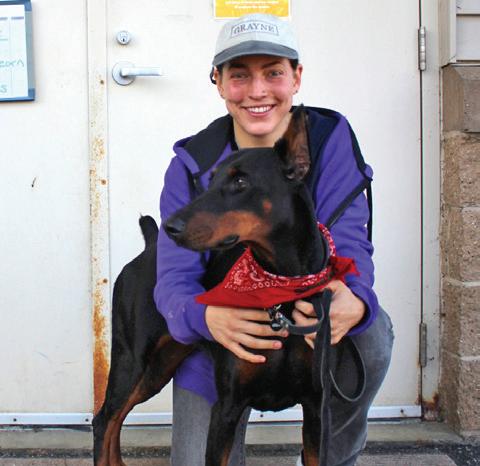
28 minute read
Shopping Guide
What is your education? I attended the University of Vermont from Fall 2014 to Spring 2017, graduating with Honors with a B.S. in animal science. I wrote my honors senior thesis on problematic behaviors in recently adopted dogs. This thesis was researched under the guidance of Jamie Shaw (Canine Behaviorist, owner/operator of The Dog School) and Kelley Bollen (M.S., Certified Animal Behavior Consultant), using their data to survey clients who adopted rescue/shelter dogs in New England. After I graduated I apprenticed under JaHaylie and dog, Wren Photo Credit: mie Shaw for 2 years, where I lived with Catherine Hibbard/Berkshire Humane Society and worked for her at The Dog School in Huntington, Vermont. Jamie was one of New England’s first behaviorists, and an expert on dog-to-dog communication. With Jamie I learned how to treat and manage a wide array of behavior issues, conduct safe play and read canine body language in extreme detail. I also guest lectured often in her canine behavior courses at UVM, which was where I fell in love with teaching others about dogs.
What certifications do you have or are you working towards? I am currently working towards my Certified Professional Dog Trainer-Knowledge and Skills Assessed (CPDT-KSA). I will be sitting for the KA exam this Spring, and will be submitting my KSA application soon thereafter) and Certified Behavior Consultant Canine-Knowledge Assessed (CBCC-KA) through the Association of Professional Dog Trainers. Additionally, I am working towards Certified Dog Behavior Consultant through the International Association of Animal Behavior Consultants. I believe certifications are important in dog training and behavior modification
Advertisement
What is your experience? I started working with “difficult” dogs and horses at age 12. I worked for rides and lessons at a local barn in Upstate New York, and took any rides I could get. This meant that I usually rode the horses who needed work, exercise or were otherwise not the first choice for other riders. I also began my own dog-walking business around the neighborhood, and because of my experience with my own reactive dog, was able to take on dogs who had similar issues. During school breaks at UVM I worked at the Animal Protective Foundation in Scotia, New York where I helped with their low-cost spay and neuter clinic, then became an animal care tech with a focus on training and behavior management in the kennel. During my junior and senior semesters at UVM I was Jamie Shaw’s teaching assistant for her canine behavior classes. After graduating, I began my apprenticeship with Jamie Shaw at The Dog School in Huntington Vermont, where I helped her in daily care and training of dogs who boarded with us, worked with her on behavior consultations and guest lectured in her classes at UVM. After I finished my two- year apprenticeship I moved to Cummington, Massachusetts where I started my own behavior consultation business (Hilldogs Behavior Consulting & Training), offering private consultation and behavior modification for dogs in the hilltowns of Western Massachusetts.
What is in your toolbox? Primarily treats and toys! I find that most dogs can be motivated with the right combination of treats (varying types, sizes, and consistencies depending on the dog, day, environment and task at hand) and cooperative toy play. The most important thing is to figure out what works for the dog in front of you in that particular moment. Like us, dogs find different things reinforcing on different days and in different environments. For example, my dog works well for FreshPet dog food around the house, but works better for a hard plastic Frisbee (NOT a soft one, mind you) when outside or in a more stressful environment. There is NO “one size fits all” type of reinforcement that works for all dogs, but all dogs can be trained using positive reinforcement! Ultimately, the specific tools in my toolbox vary depending on the dog I am working with. But additional “tools” I often use are front-attachment harnesses, head halters, basket muzzles, long lines, clickers, GPS collars and a good bait bag/treat pouch.
What services do you offer? (i.e. group, private in home, virtual, etc.) At Berkshire Humane Society I offer private on-site and virtual consultations, group classes, virtual puppy orientations, and adoption behavior counseling.
Family Dog School Berkshire Humane Society 413-447-7878 extension139 www.BerkshireHumane.org
Positive reinforcement training
Written by Haylie Gernert-Dott
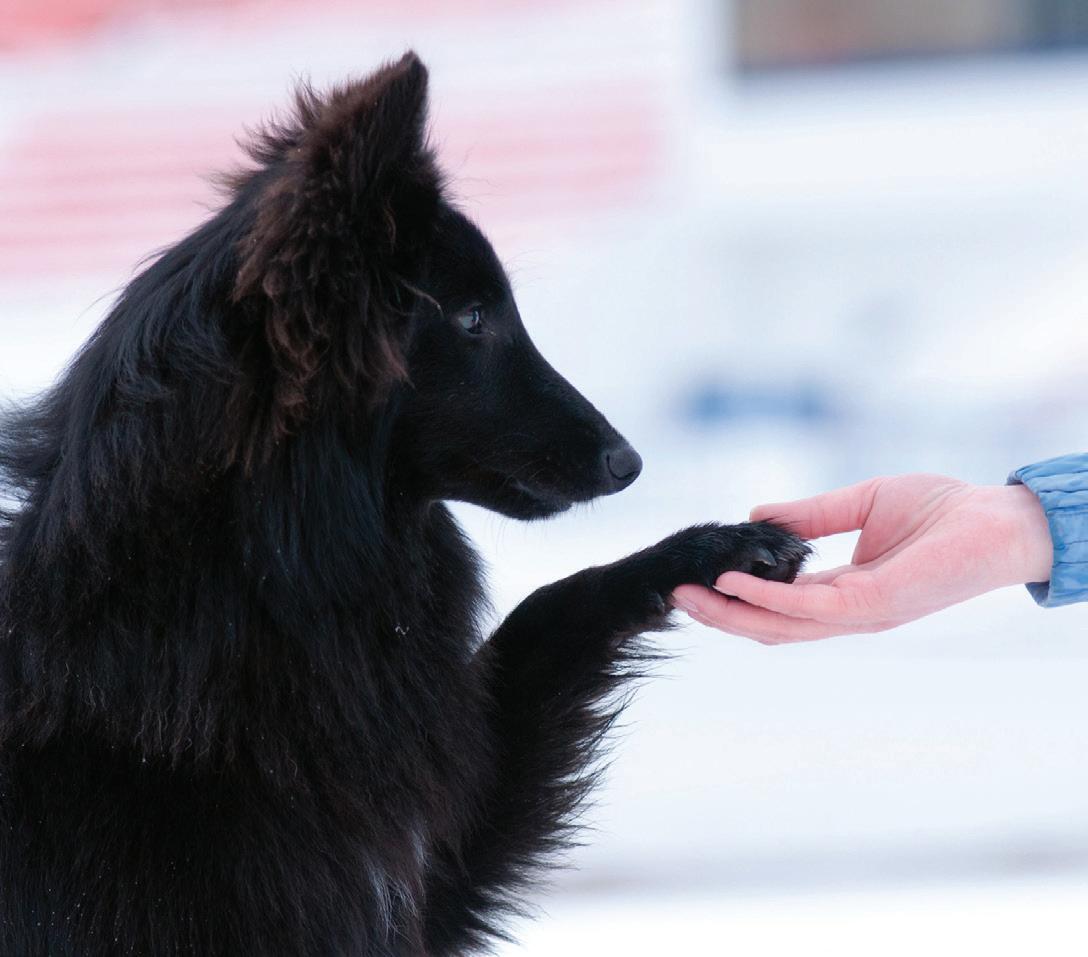
The most common complaint I hear about this style of training is that “My dog doesn’t work for food.” The implication is that therefore the dog cannot be trained using positive reinforcement. What I wish people knew was that positive reinforcement is so much more than food!
What I love most about being a dog trainer is that every dog is a puzzle, and they are different every single day. A dog may work well for treats in one scenario, but be unable to eat when you take them outside to work. They may enjoy working for a tennis ball one day, but be completely disinterested in it the next. The challenge is to figure out exactly what makes each dog tick, and to create training scenarios in which they can WIN that reinforcement consistently through working with you. Over time, training with positive reinforcement builds a deep connection between dog and handler, built on trust and open communication. To me there is no better feeling in the world than when you are working as a team with a dog, feeling that synergy as you move through exercises together, doing things together that would be impossible to do alone.
Positive reinforcement training is an invaluable tool for shelters. Here dogs are often confused, anxious and often come with established behavior issues. Positive reinforcement training gives these dogs agency over what happens to them. In an environment where they have little choice, they know that they can perform behaviors that earn them food, attention, access to play and other valuable things. This agency improves their mental health, and helps them build working relationships with the staff and volunteers they interact with every day. Through these relationships our shelter dogs learn to trust humans once more, and begin positive behavior change that makes them better candidates for adoption.
At Berkshire Humane Society positive reinforcement training is the bedrock of our canine welfare program. Using positive reinforcement with our dogs alleviates stress and creates a safer, calmer, more trusting environment for our dogs and the humans who care for them. Our humane training protocols make life better for our dogs during their time with us, and set them up for long-term success in their adoptive homes!
Socialization in a Socially Distanced World
Written by: Melinda Schneider, M.Ed.
Often new dog owners will try to introduce their pup to dozens of people and dogs early on. What can happen is that puppies feel overwhelmed. They may meet a tall gruff man who scares them and develop a lifelong fear of men and deep voices. They meet a toddler who trips and become forever suspicious of children. They hear a train whistle and become worried about all whistling sounds including your kettle.

It’s critical that your puppy be “socialized” in ways that don’t create lasting fears. The key is to make introductions from a distance, perfect during COVID! As you walk around your neighborhood, offer a treat whenever the pup sees or hears something new. This will teach your dog 1) that new things are rewarding; and 2) to orient to you whenever something new appears.
Youtube is a great source of sounds. Dogs barking, trains rumbling, thunderstorms, trucks, vacuum cleaners, babies crying. Start with the volume very low so your dog shows no reaction. Gradually increase volume and continue feeding. Introduce your dog to walking on a variety of surfaces.
Add variety to your dog’s life. Don’t always feed at the same time or in the same room. Variation creates adaptability. Other ways to shake things up: go for random car rides to nowhere; leave the house briefly without your dog; have someone knock on the door while you feed. Play games that encourage stillness, calm, proximity and orientation.
Games can increase confidence, optimism, and ability to handle novelty. Two Paws Up is a simple game; your dog will feel optimistic with front feet on a box, a bucket, a cake pan. Another favorite game of mine is Novelty Box. Using a box that the pup can easily climb into, fill it with found objects: toilet paper rolls, food containers, a bell, a pot lid, scatter kibble in and around the objects and let your dog go to town. Novel experiences create well-adjusted dogs.
I hold a Master’s Degree in special education from Westfield State College (now Westfield State University) with a concentration in Severe Special Needs. My undergraduate degree is from the University of Massachusetts.
What qualifications do you have or are you working towards?
Prior to starting Fun With Fido in 2001, I spent 3 years working in an animal shelter as animal caregiver and adoption counselor. I also apprenticed with two other dog trainers before heading out on my own. I am currently working toward Pro Dog Trainer qualification with absoluteDogs. In addition, I am an active foster home for Australian Cattle Dog Rescue Association providing assessments and training to dogs looking for their forever homes.
What is your experience?
I started my dog training business, Fun With Fido, in 2001 after working for 3 years in an animal shelter and apprenticing with two other dog trainers. I began formal obedience training as a child and have now been training dogs for nearly 50 years. My approach to training, and my philosophy, have changed from the correction-based methods so popular in my childhood to a hands-off approach where the dogs “tell” me how best to train them. Fun With Fido uses scientifically sound training principles and a game-based approach to teach everything from agility, obedience, and manners to effecting behavioral/emotional changes.
What’s in your toolbox?
I use games to teach dogs the behaviors that their people want them to know. I like helping dogs feel confident and optimistic so that they make good choices in all the situations they encounter. I prefer plain buckle/clip collars and seek to never apply pressure. When possible, I like to train indoors or in a safely fenced area where dogs can be off leash and learn to make good choices. I’ve adopted two formerly feral dogs who have taught me a great deal about working with dogs even when they are too afraid to allow touch. I motivate dogs using food, toys, praise and pats when they are welcome. I’m also a fan of clickers and other markers to facilitate clear communication. I will often use agility equipment and concepts to build confident dogs.
What services do you offer?
Most of my training takes place in my fully fenced outdoor training yard where I have a set of agility equipment and other training tools. Prior to COVID, I also offered home visits; this past March, with the novel virus in full swing, I moved to virtual training to bridge the gap prior to resuming in-person trainings. At this time, I’m training in-person in private and semi-private lessons; I expect to resume small classes April 2021. I’ve also recently started a youtube channel (Jaunty Dogs), which allows me to present training videos to my online clients and gives potential clients an opportunity to see me in action.
Melinda Schneider, M.Ed. Fun With Fido www.funwithfido.com teampizazz@gmail.com 413-443-1687
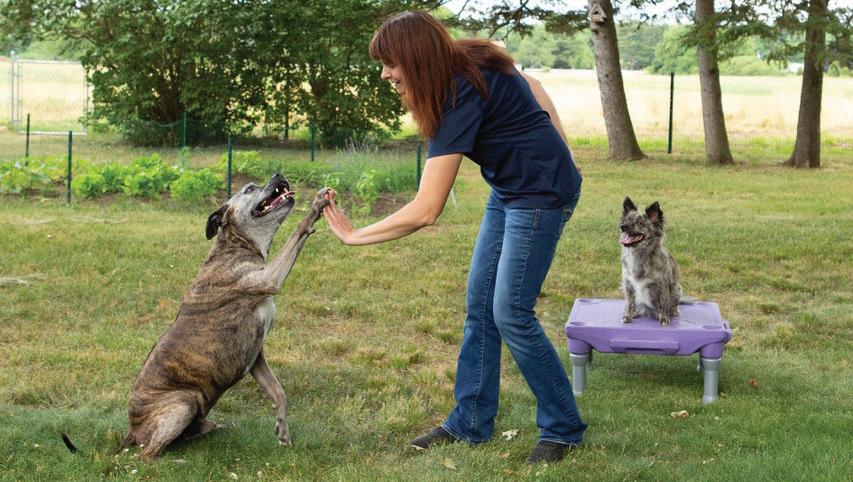
Written by: Jill Haley Rose Photo Credit: Luann Rose
Photo credit Kat Kattler
What is your education?
I am a 2002 graduate of the San Francisco SPCA Academy for Dog Trainers. I also completed a post graduate internship to earn a Certificate in Dog Aggression with Honors.I apprenticed with many accomplished trainers in the San Francisco Bay Area in my early years before embarking out on my own. In 2004 I received my CPDT-KA,Certified Professional Dog Trainer - Knowledge Assessed, through the Association of Professional Dog Trainers. In the spring of this year I accomplished getting my CDBC, Certified Dog Behavior Consultant, through the International Association of Animal Behavior Consultants. I strive to be continually educated and up to date in the world of canine behavior, and attend seminars and conferences every year led by the leaders in the animal behavior field.
What certifications do you have or are you working towards?
I am currently working towards getting my CSAT - Certified Separation Anxiety Trainer.
What is your experience?
I’ve been working as a full time professional trainer and dog behavior consultant for the past 17 years. I have worked with all types of behavior cases and challenges over the years.
In addition, I have worked as a trainer and canine behavior specialist for a number of rescue groups and shelters, including Dakin Humane Society in Springfield, MA from 2010 to 2015.
What is in your toolbox?
Oh boy that would take forever because my tool box is pretty much the entire back of my car. I’m a fan of a good leash so I love Premium Ruff Grip leashes as well as a well made leather leash. My favorite harnesses are the Freedom No Pull Harness because it fits most dogs really well and has a lot of versatility with how you can use it. I have various lengths of long lines but my favorite is Mendota rope long lines because it’s so comfortable in your hands and is easy to untangle. Lots of toys, especially bigger tug style toys. Always a variety of training treats, and a good sized trainer’s bait/ treat bag. I want it roomy and be able to clip around my waist. For dogs that need muzzles, my go to are the Baskerville Ultras, light weight, easy to fit, dogs can pant comfortably, drink water, and eat treats while wearing them.
What services do you offer? (i.e. group, private in home, virtual, etc.)
We offer in-home as well as virtual on-line services. This includes Initial Behavior Consults, 1 hour follow up sessions, a variety of packages such as Puppy Starter, Family Coaching, and Day Training packages. Sit and Stay - training and pet sitting combo, Train & Walks - dog walking and training combo. We have 2 hour Dogs & Storks workshops - preparing families with dogs for life with baby. In addition, we also started offering cat behavior consulting and training services this year. We all know the fastest way to a dog’s heart is a wonderful tasty treat. Using bite sized semi-moist treats makes positive reinforcement training efficient, as we can get many reps completed in a training session and it is easy for us to deliver the reinforcer very quickly with the behavior we want to reward. That said, I have seen folks get stuck on just using treats to reward their dogs, and not transitioning to the entire world of reinforcers that their dogs have access to every single day. Using these Life Rewards is key to bringing your dog up to that next level of good behavior that we all are seeking to accomplish.
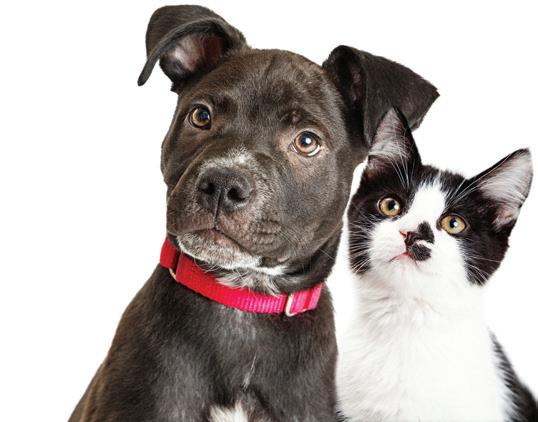

Step 1: Train the behavior fluently using food rewards in many environments.
Examples: sit in the house, sit outside and sit in distracting environments. This piece is very important and one where folks fall short. They need to create a strong foundation using the food rewards in as many different environments and distractions as they can.
Step 2: Recognize the Life Reward and how you can use it.
Example: Dog wants to go outside to fenced yard to chase squirrel up a tree
Life Reward is getting to chase squirrel. Cue the sit at the door. The moment the dog sits, praise and open door for dog to run out and chase the squirrel.
Step 3: Create a “thinking ahead” dog. Now that you have a well trained “sit” and have started asking the dog to “sit” for a variety of Life Rewards, this is when you get to be a “lazy trainer”.
Example: Dog wants to go outside to chase squirrel up a tree. You approach door, put your hand on the doorknob, look at your dog, and then wait quietly and patiently. Don’t say anything. Ignore any fussy fidgety or whiney behavior. Your dog is so used to waiting for you to say “sit”. This is different! Let him think. The moment the light bulb goes off and he sits without you saying anything, you praise him enthusiastically and immediately open the door for him to run out and chase the squirrel.
You can use this 3-step approach for all sorts of life rewards. Make a list of what all those things could be for your dog and how you can transition from your food rewards to smartly utilizing those life rewards.
Group classes or private training which is right for me and my dog?
Written by Melissa Kielbasa, CPDT-KA
At the start of your training journey, you might be trying to decide what would suit your dog better – a group class or private training. Positive reinforcement trainers want to help you change and modify behaviors by building a trusting relationship between you and your dog without the use of aversive equipment or techniques. They take the time to get to know you and your dog, recognize personal learning needs, and adjust training exercises as needed to set you up for success. Part of our job is helping you decide what type of training atmosphere will work best for you and your dog.
Group classes help dogs learn and focus around distractions, offer a social outing for the dogs, supply wonderful emotional support to owners, and allow participants to share successes, challenges and training experiences. In a group class you can hear questions from other students and observe numerous dogs learning the training skills which may help improve your technique and understanding of the exercises. Most group classes have an established curriculum that will focus on specific predetermined behavior and training goals which can be advantageous if those are the skills you are seeking. A well run group class recognizes the space requirements necessary to keep dogs comfortable, understands how many dogs can be successful per trainer, and are generally more affordable. The group class meets on a regular schedule, typically the same day and time for a set number of weeks, which is convenient for folks who prefer that regularity.
Some dogs, however, may not be suited to a group class environment. Dogs that are fearful or worried around strangers or other dogs may require a quieter, calmer environment that a group class can’t offer. If your dog has displayed aggressive behavior to household members or visitors to your home, addressing those concerns with private training would be a better option. Dogs with special concerns, such as separation issues or resource guarding, require individual attention and details that cannot generally be offered in a group setting. Private training is more flexible with appointment times for clients with a complicated schedule, and allows adaptation to training goals as needed.
Many positive reinforcement trainers offer both group and private training sessions, or work with a network of colleagues that facilitates both options. Often private clients find great success transferring to a group class once their dog has mastered some essential skills. Knowledgeable trainers will do their best to guide you on your training journey and will recommend a learning environment that will offer the best results.
What is your education?
I have a Bachelors of Science degree in Animal Science, was a certified veterinary technician, and apprenticed with numerous highly recognized trainers prior to starting my own business.
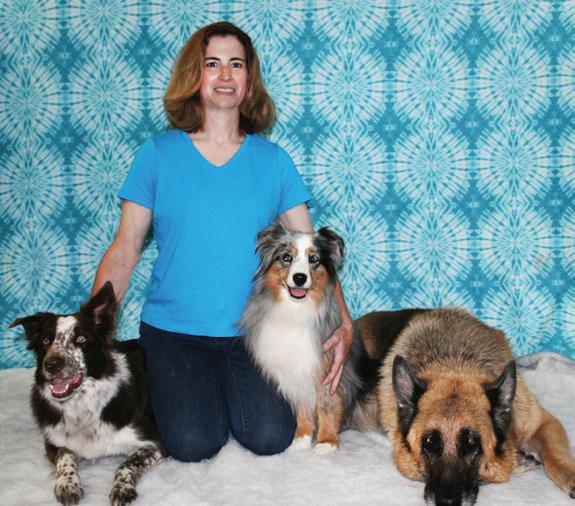
Photo credit: Sandy Meadow Farm
I am a Certified Professional Dog Trainer (CPDT-KA), a professional member of IACP, a supporting member of IAABC, an AKC evaluator for Canine Good Citizen, S.T.A.R. Puppy, and Farm Dog Certification, and Director and Head Trainer for K9’s for Kids, Inc Pediatric Therapy Dog Unit. I continue my education units to maintain my certification.
What is your experience? My parents raised German shepherds, so I can’t remember a time in my life that I was not involved with dogs. I went to college to acquire a Bachelor’s Degree in Animal Science and found myself drawn to the behavior side of the profession. Much of my formal enthusiasm for training was sparked by the shepherd at the university barn who ran the entire facility with 2 border collies. The working relationship she had with her dogs inspired me to concentrate on behavior theory and application in college, and to work for a veterinarian after graduation who was well known for his training and behavior counseling with schutzhund and police dogs. For the next 30 years, I continued my education through CEU credits, successfully competed with my own dogs and guided many clients to titles in pet, conformation and performance venues, I developed the K9’s for Kids Inc. Program, founded the Westfield Woofers Dance Team club, built a training facility on our farm property to accommodate group and private lessons, and continue to be enthusiastic about educating clients who want to develop a meaningful, positive relationships with their dogs.
What is in your toolbox? My general toolbox includes a crate, gates/exercise pen, 6 foot leash, 20 foot leash, flat buckle collar (or sometimes a martingale collar), bait pouch for treats, clicker, a safe tether if other comfortable confinement can’t be utilized, toys (ball, squeaker, and/or tug toy), vehicle confinement (crate, seat belt or barrier), occasionally a head halter or appropriate harness.
What Services do you offer? Sandy Meadow Farm Dog Obedience School specializes in group classes both on site and virtually, private training, behavior modification programs, therapy dog training, CGC training.
Sandy Meadow Farm Dog Obedience School Melissa Kielbasa 342 Union Street Westfield, Ma 01085 413 – 572 – 4936 www.sandymeadowfarm.com info@sandymeadowfarm.com
Milka Cover Contest Winner
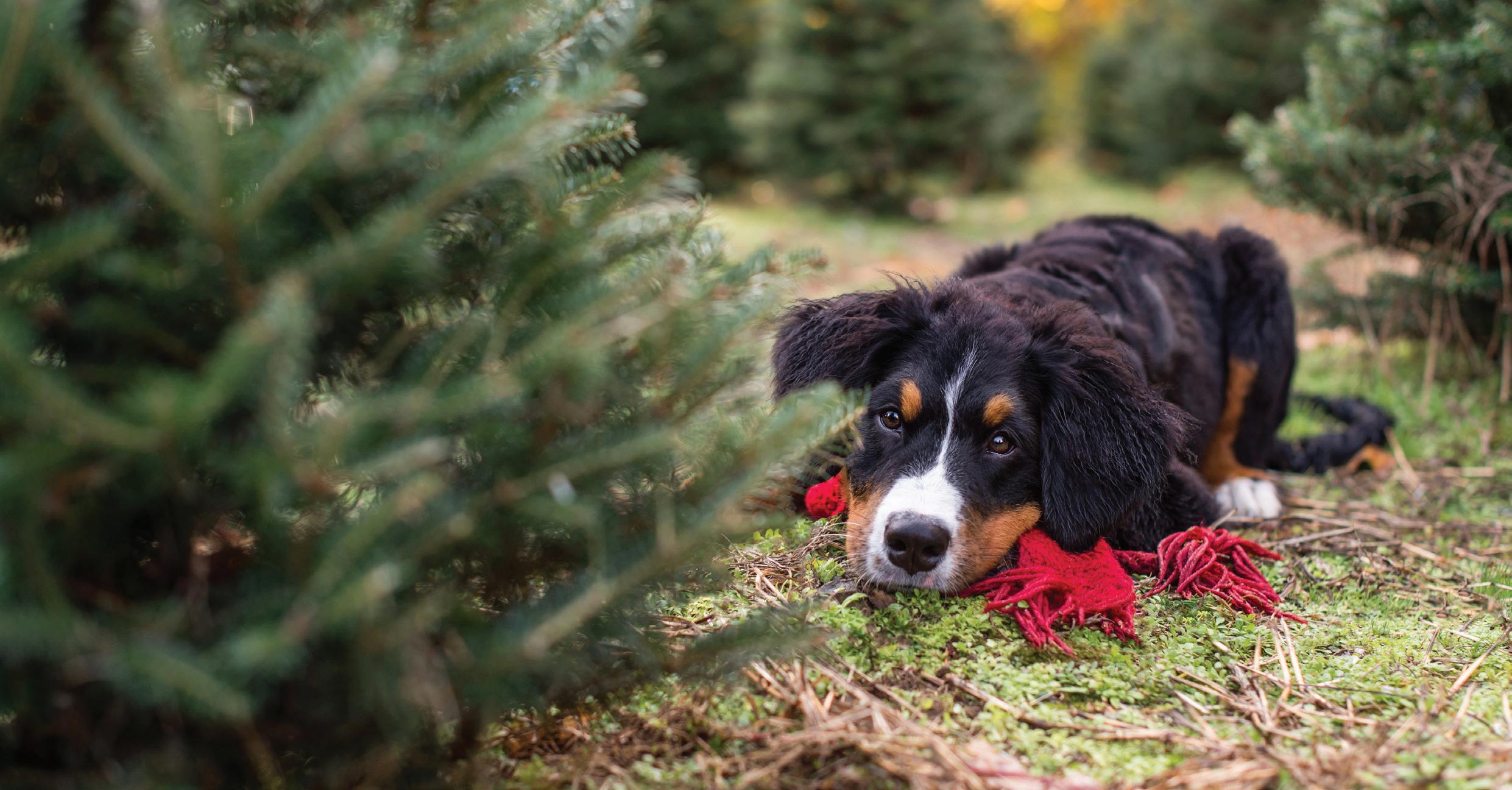
Photo Credit: Vee ButlerPhoto Credit: Kerry Rubio, Bark at the Moon Photography
What is your pup’s nickname?
I sometimes call her as “Monster” because she is anything but a big monster!
What is your pup’s age?
She will be seven months in late December.
What is your pup’s breed?
Bernese mountain dog
What is the best thing about your pup?
How unconditionally loving she is. And how she can bring joy to complete strangers. She wags at everyone and likes to sit on people’s feet, lean onto their shins, and be pet. She especially likes kids.
What is the funniest thing your pup has ever done?
The first time she saw a cow she stopped in her tracks completely transfixed. I think her mind was completely blown!
What is the most memorable moment you had with your pup?
Bringing her on a camping trip when temperatures went down to the 30s. She was so well behaved in the tent and was great to have sleeping in my sleeping bag as soft little heater!
Does Milka have any pet siblings?
No siblings, unfortunately! However we’d love to get a second dog in the future sometime.
Tell readers a little bit about your family.
Hugh and I are in our late 20s and have been dating since college in Minnesota. Hugh is from Albany, NY and I am from Vermont. We moved to North Adams, MA in August from Washington, DC because we can now work remote because of COVID. We wanted to be closer to family and nature -- and avoid expensive DC rental prices.
We’re looking forward to backcountry skiing this winter with Milka. Hugh works in urban planning and I work in international development.
What is a typical day like for Milka?
Wake up with us at 7 a.m. and play outside a bit until it’s time for us (me and Hugh) to start work from home. She then plays with her toys and sleeps off and on for much of the day, with us taking her out and playing with her during breaks from work. In the evening, she often plays outside with our neighbor’s two dogs Bella and Chloe or we sometimes go on a short hike around Mt. Greylock or Savoy State Forest.
What is Milka’s favorite activity?
Chewing sticks and squeaking her toys as fast as she can.
Name one thing that Milka doesn’t like and one thing that she does like.
Milka does not like brooms and vacuums. And she loves stealing socks out of the laundry hamper and chewing them. She also really likes kids - she gets super excited and happy whenever she sees them.
If Milka could text you, what would she ask you?
“Can you stop working and come play with me?”
If Milka could talk, what question would you ask her?
“Can you please stop stealing my socks?!”
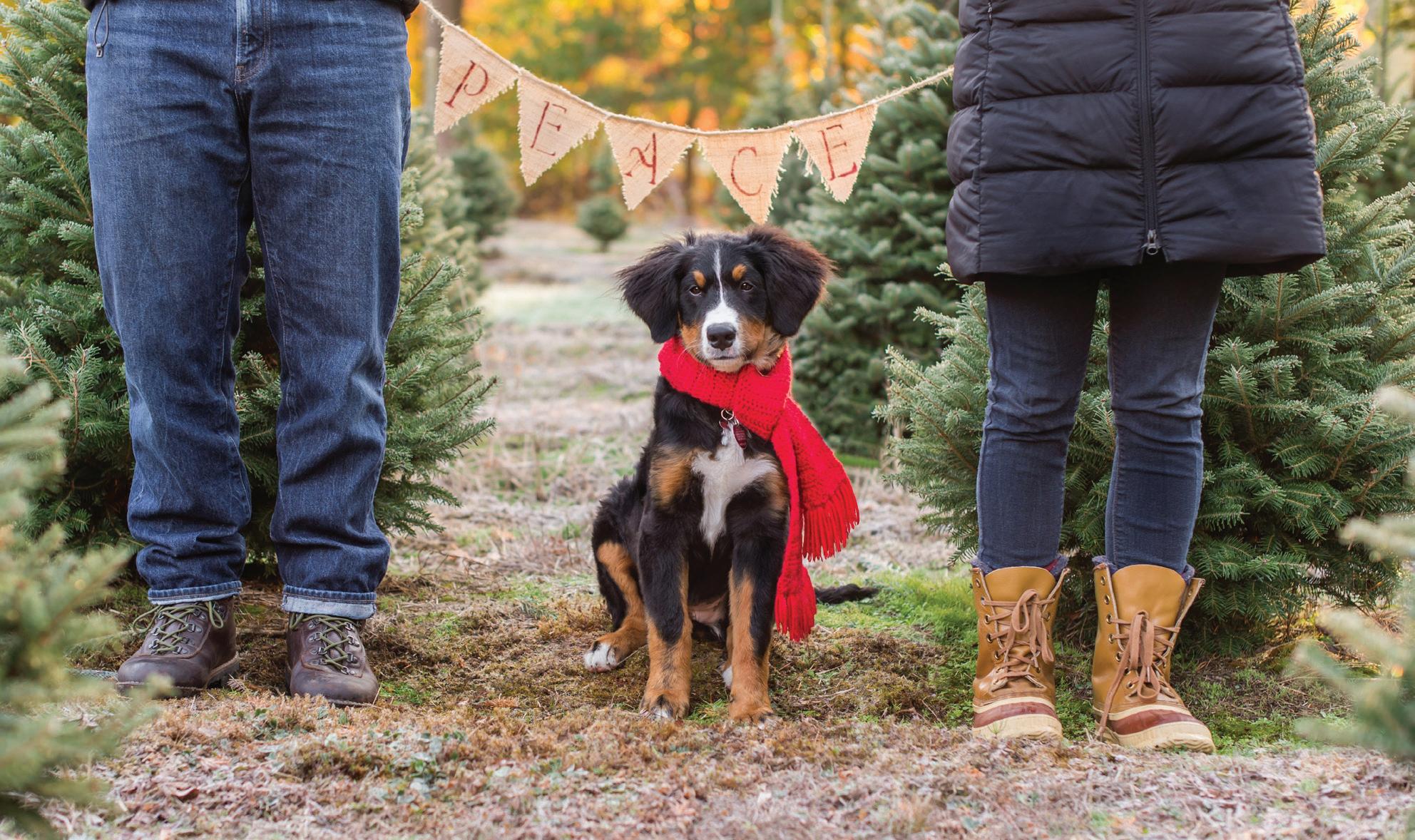
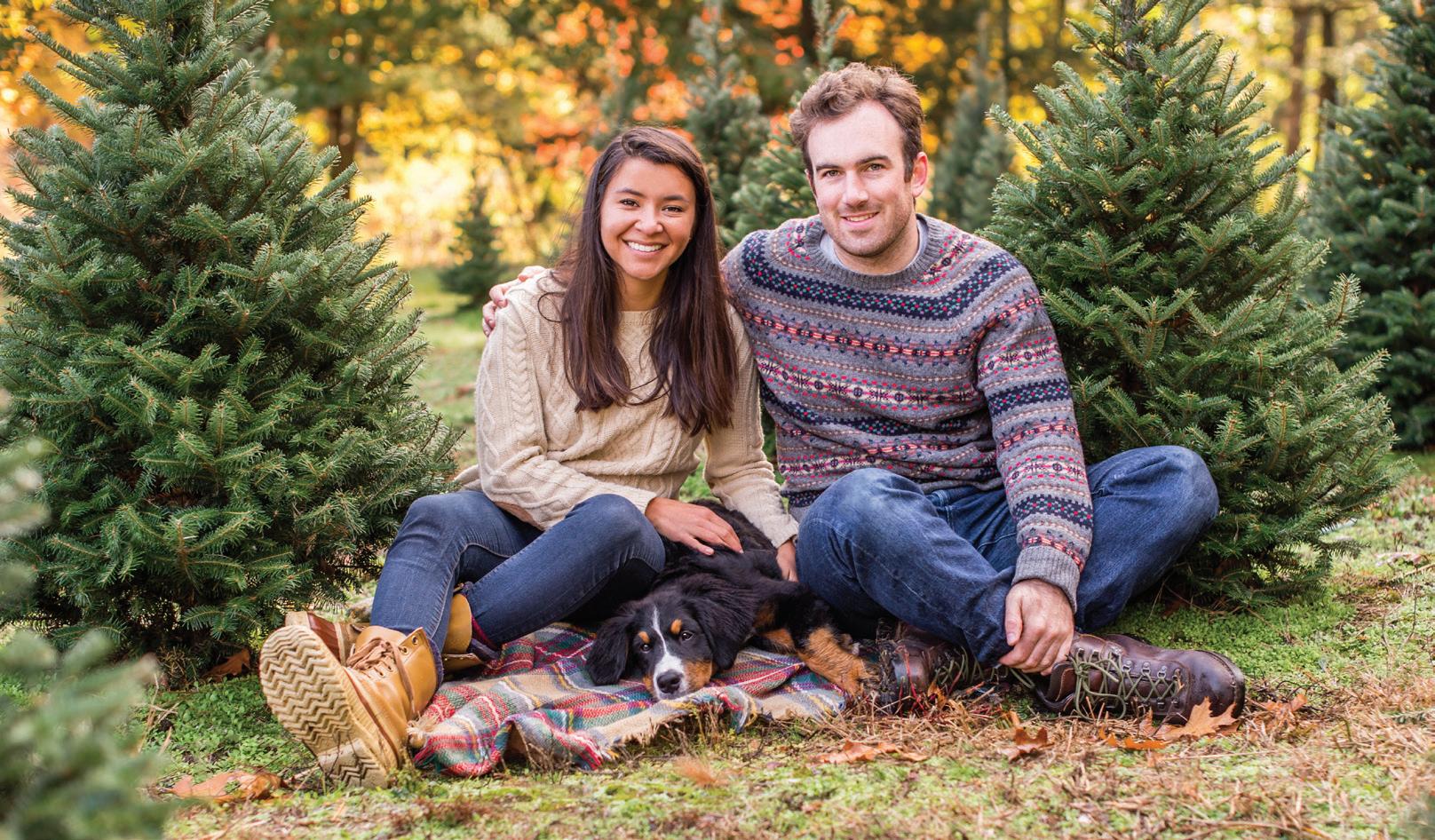
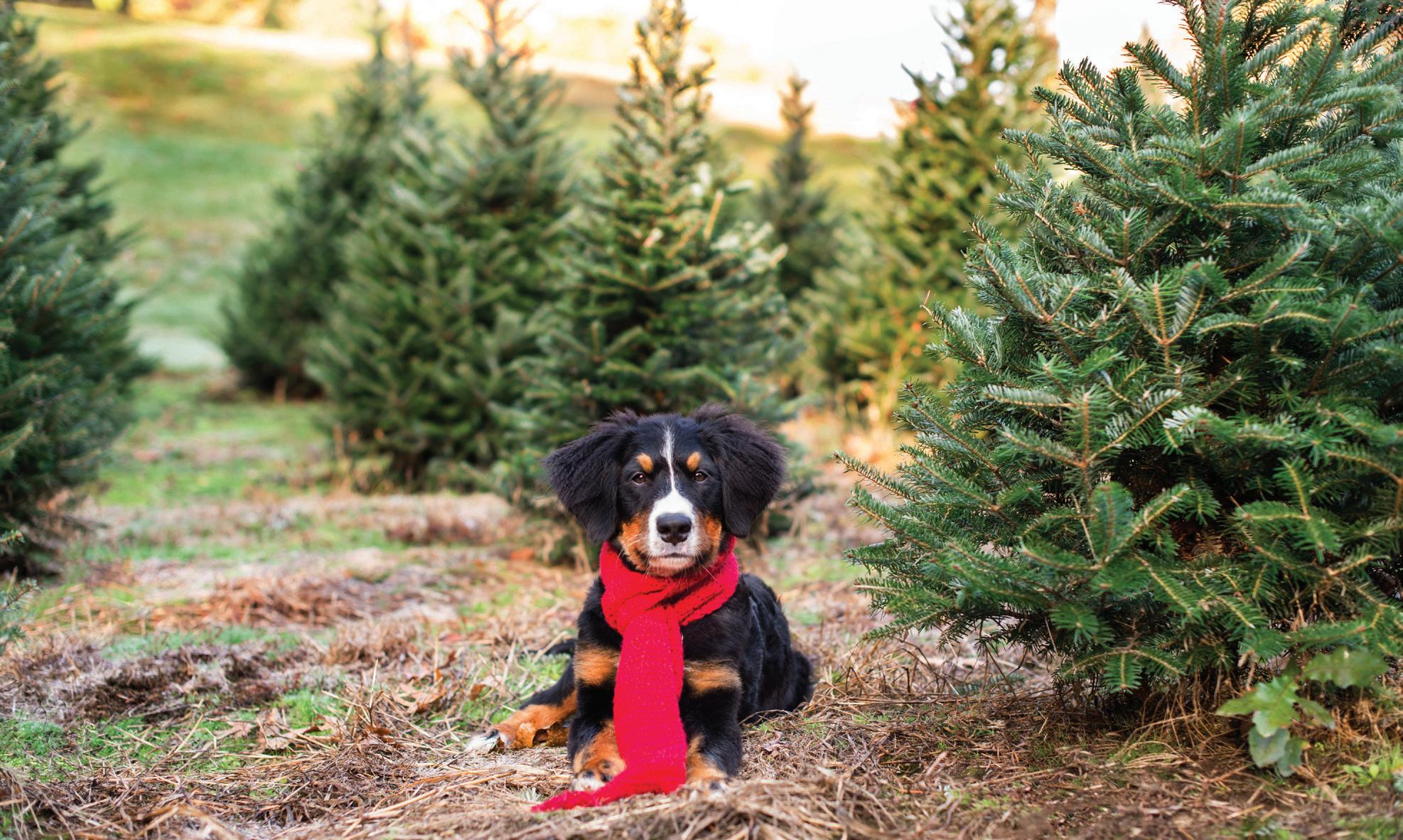
Greyson
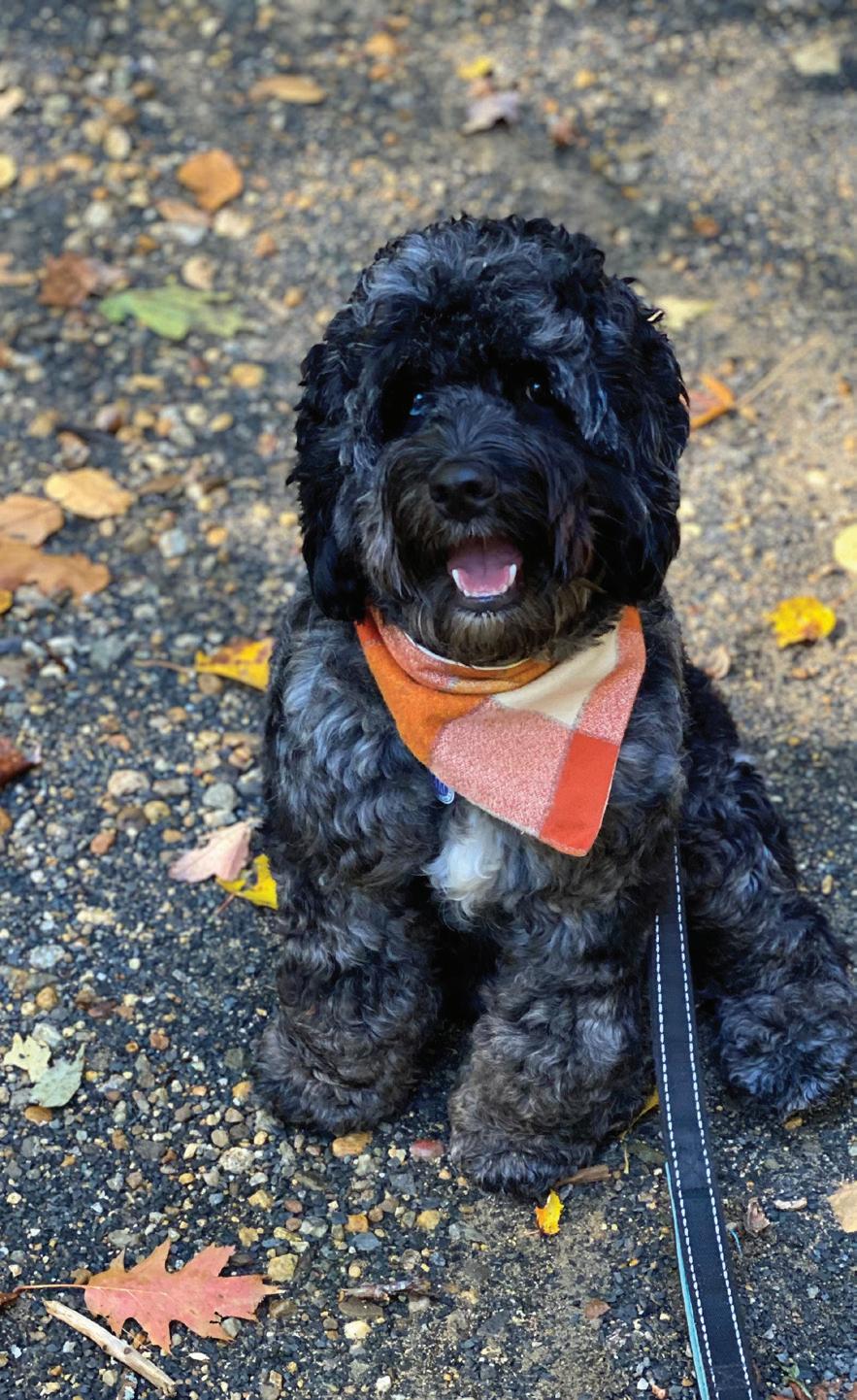
Photo Credit: Katie Chappell What is your pup’s nickname?
I go by Kalahari but my full name is Harmony Hill’s Desert Oasis CGCA TDI RATO FDC.
What is your pup’s age?
I was whelped on May 28, 2012.
What breed is your pup?
I am a red merle Australian Shepard.
What is the best thing about your pup?
I think the best thing about myself is my good looks. Grey
What is your pup’s age?
He just turned one on October 2, 2020.
What is your pup’s breed?
Cockapoo
What is the best thing about your pup?
He has been a joy to have for the past year, more so with COVID and living alone. I was lucky in some ways that I had already had him before quarantine started. He is a smart boy who loves to learn, work on training and learn tricks. He is working to become a therapy dog so hopefully one day I will be able to bring him to work with me.
What is the funniest thing your pup has ever done?
Greyson can be a dramatic pup at times, and any time he gets medicine whether it is pills or his flea and tick ointment. He will take the pill and immediate flop over like he is playing dead or with the flea medicine, he rolls on his back and then plays dead right afterwards.
What is the funniest thing your pup has ever done?
One of the best things to do is blow bubbles out your nose under water.
What is the most memorable moment you ever had with your pup?
Some of the best memories I have is traveling around the country with my family.
In 25 words or less, tell us how your pup became part of your family?
I was told I was whelped in the dining room, second of my litter and just never left.
What is the most memorable moment you had with your pup?
He has been scared of water all summer. I kept bringing him to one of our summer camps that I manage to try and teach him to swim. As soon as his paws got wet he’d be like ‘nope’ and go sit on the beach. At the end of the summer we went to a camp and he drank a sip of the waterand waves from a boat went up to the beach but he decided ‘this is the best thing’and just jumped in and over the wave. Hespent the next twenty minutes just jumping up in the water like a rabbit not swimmingor running out of the water. He thought itwas the greatest thing. I eventually had to drag him out of the water. So next summerI think swimming will be in the future even if it took multiple weeks this summer to get him to realize the lake wasn’t that scary.
In 25 words or less, tell us how your pup became a part of your family.
Greyson was an impulse purchase I saw his photo and emailed the breeder not expecting the only blue merle and one blue eye pup in the liter to actually be available and
What is your pup’s nickname?
he was the only one who was.
Kalahari
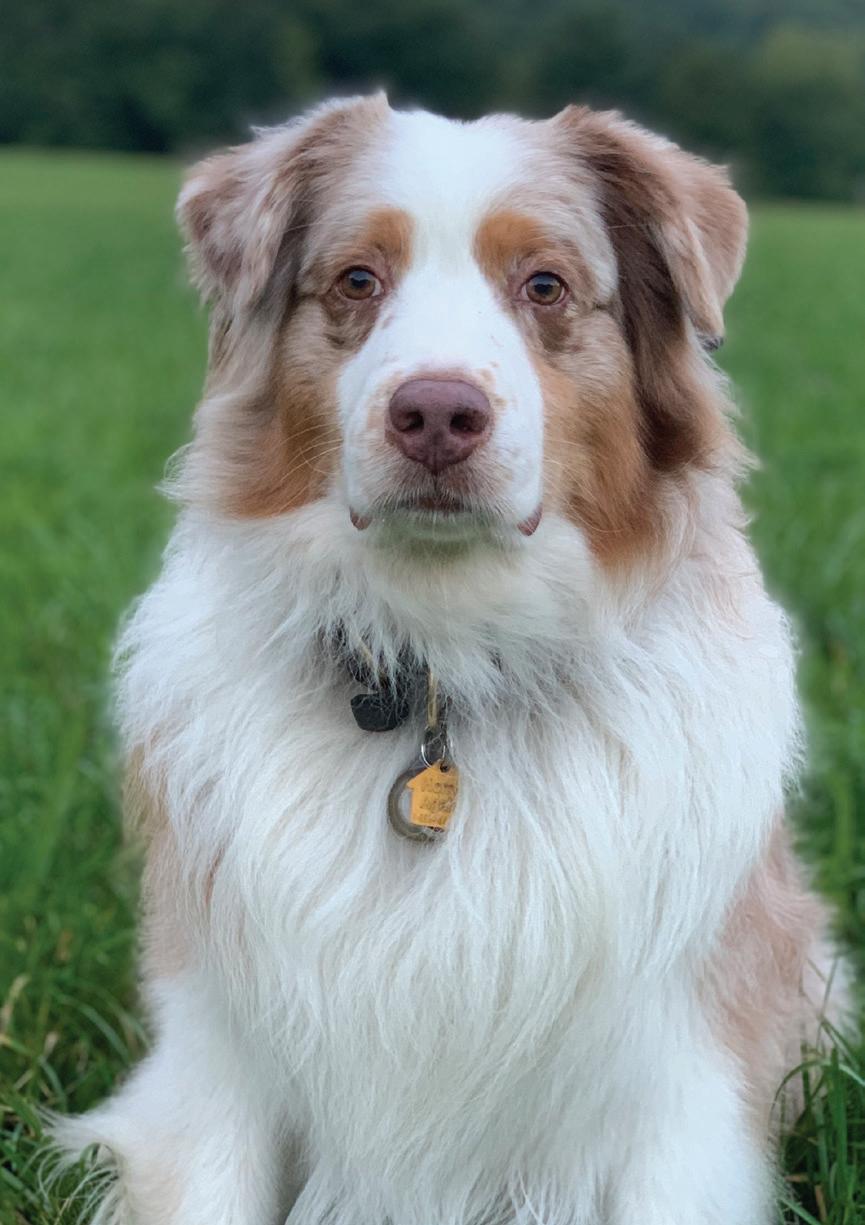
Lupin
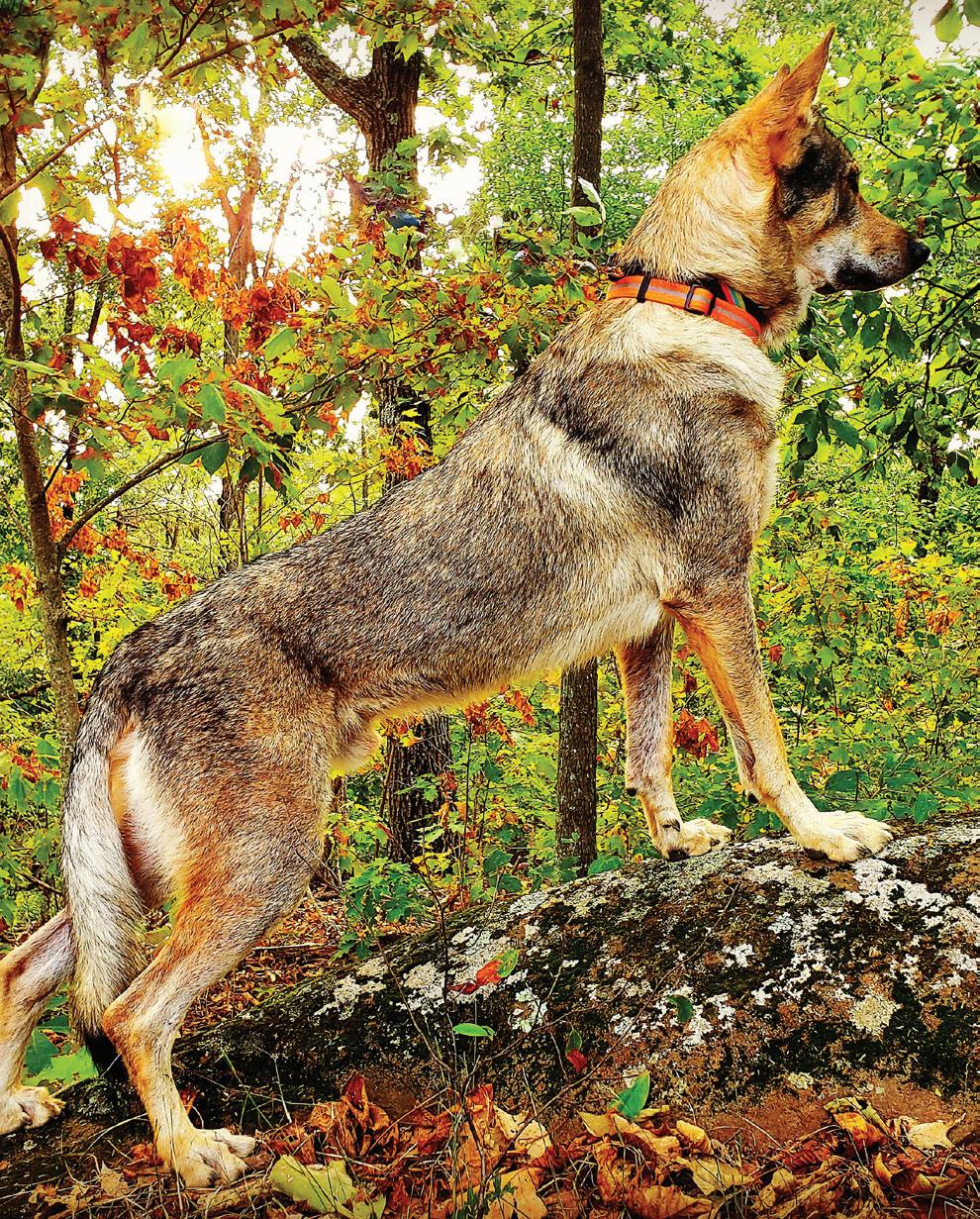
Photo Credit: Mollie McGurk What is your pup’s nickname?
Spud, Tater and Stinky
What is your pup’s age?
Potato is six-months old
What is your pup’s breed?
Pembroke Welsh Corgi
What is the best thing about your pup?
He always wants to be on my lap and at 24 pounds, it’s getting more difficult each day!
done?
He rings a bell on the door when he needs to go outside. One day, he rang it and I turned around from my desk to tell him ‘no, we just went outside’. Looking back to my screen, he Wooby
What is your pup’s age?
He will be turning five on December 21, 2020.
What is your pup’s breed?
Czechoslovakian Vlcak
What is the best thing about your pup?
Everything! Lupin is super smart and very perceptive. He learns fast and is very closely connected with his pack. He always knows when we need a little extra love.
What is the funniest thing your pup has ever done?
Lupin is a comedian extraordinaire, but one of the funniest things he does is ‘talk’ rang it again and I repeated ‘you have to wait, we just went’, and returned to my screen. He then pulled the bell so hard it slammed into the floor making a crashing sound as he started rolling around and tangled himself in the rope. Needless to say I untangled him and took him out.
What is the most memorable moment you had with your pup?
Everyday he wakes me up with a wet nose to my cheek, a memory I get to relive but will not forget. In 25 words or less, tell us how your pup became a part of your family. My brother had a corgi for six years, finally convincing me it was the perfect dog. I found Potato... and my brother found a second corgi, Barbara. to us. He makes a wide range of unique noises and we can carry on some pretty entertaining conversations with him.
What is the most memorable moment you had with your pup?
This is tough because there have been so many! We have been on countless amazing adventures and he has even done modeling for clients like Sony and GQ magazine, but if we had to pick a moment in time, it would probably be when we first met him at the airport terminal. It was love at first sight and felt like it was meant to be!
In 25 words or less, tell us how your pup became part of your family?
Lupin is a dream realized all the way from Slovakia. From the moment he stepped off
What is your pup’s nickname?
What is the funniest thing your pup has ever
that plane, we knew it was meant to be.
Potato
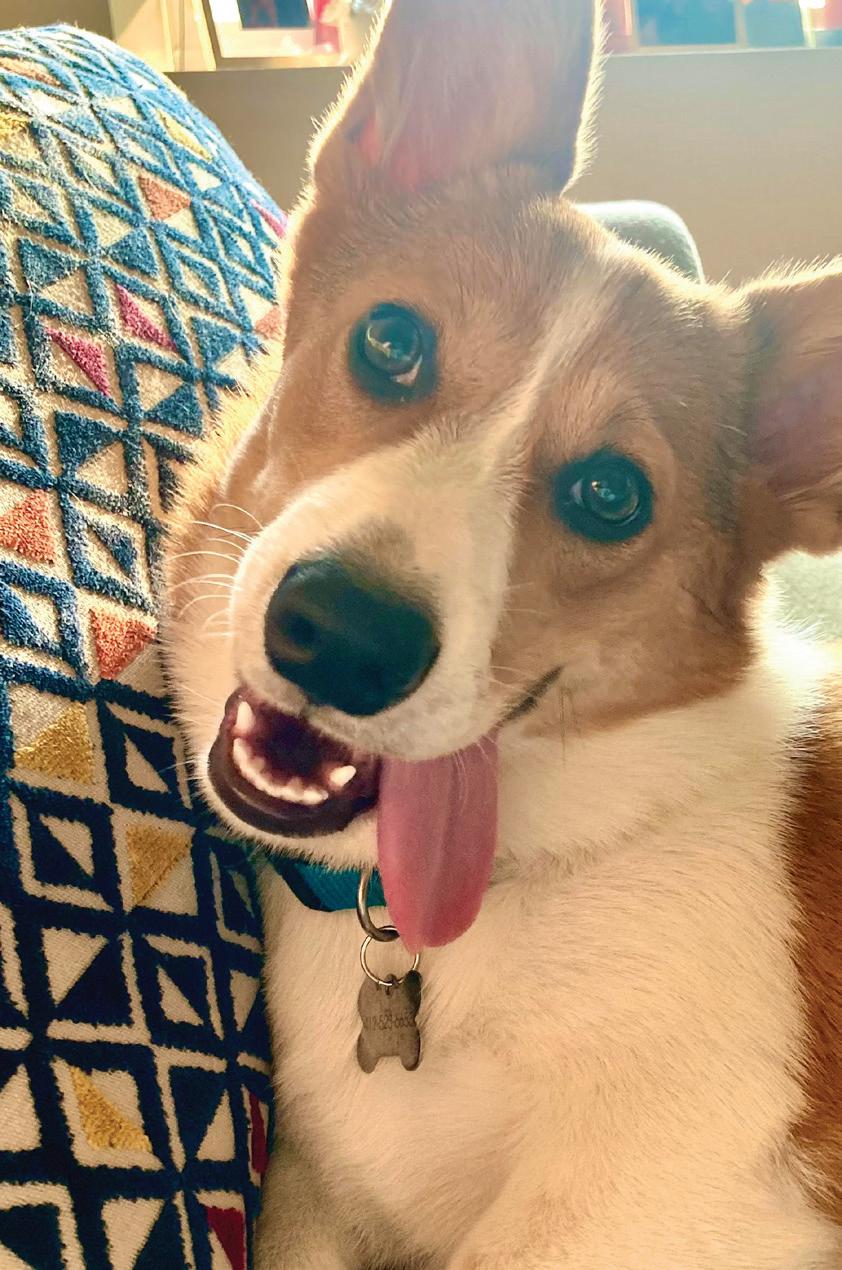
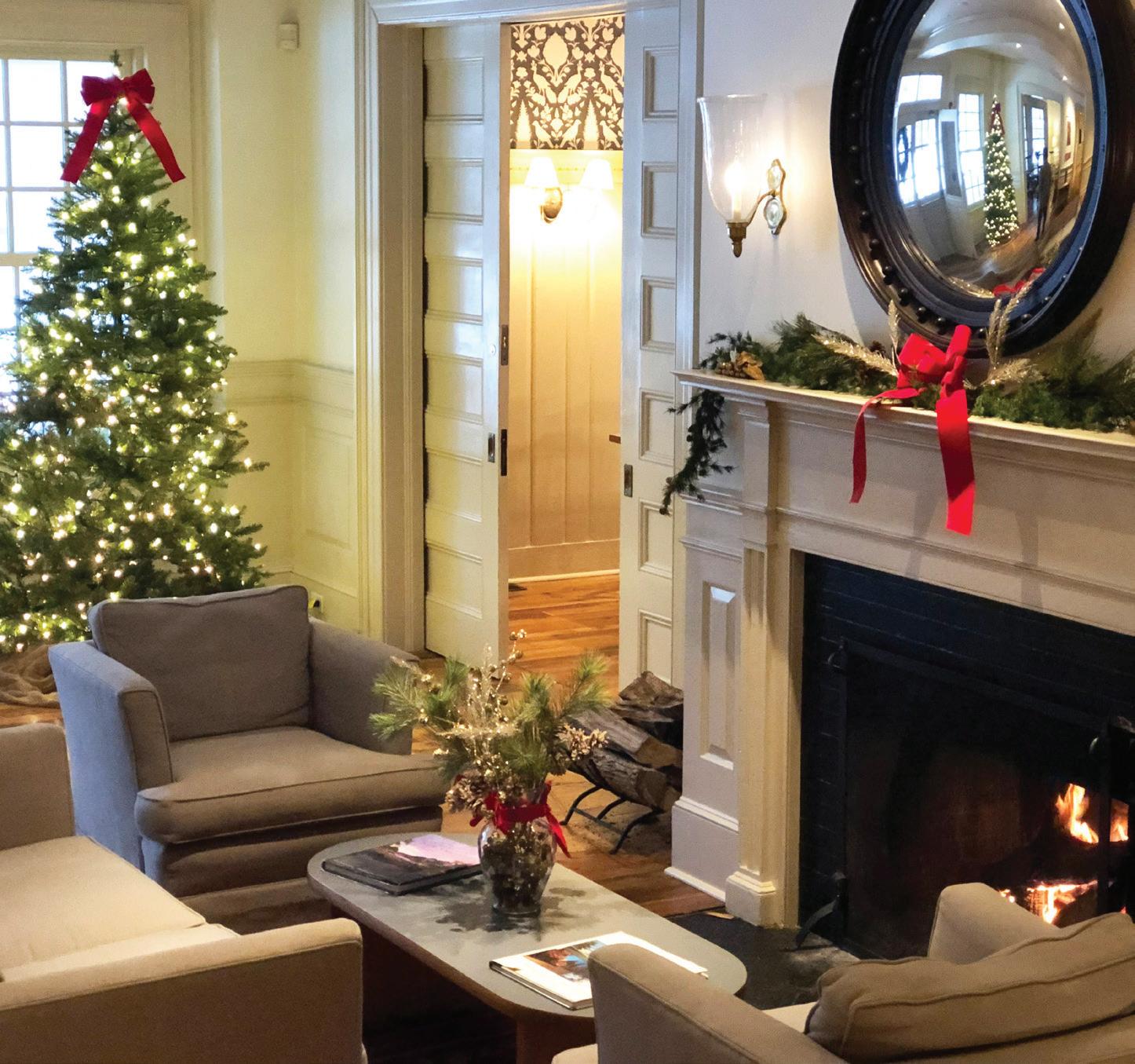
Photo by: John Gruen
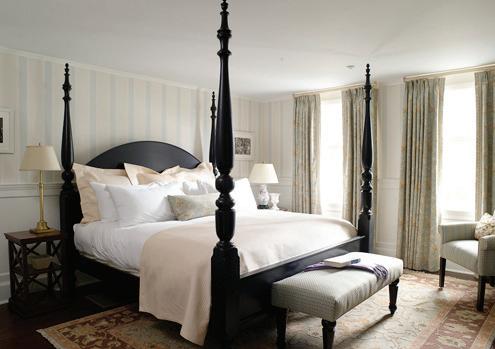
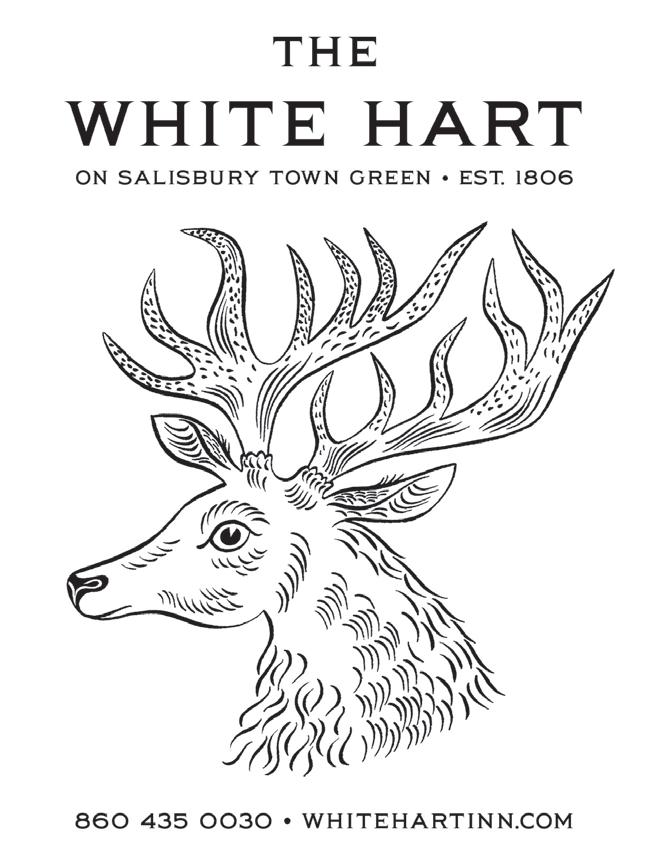
Photo by: Emma Osborne
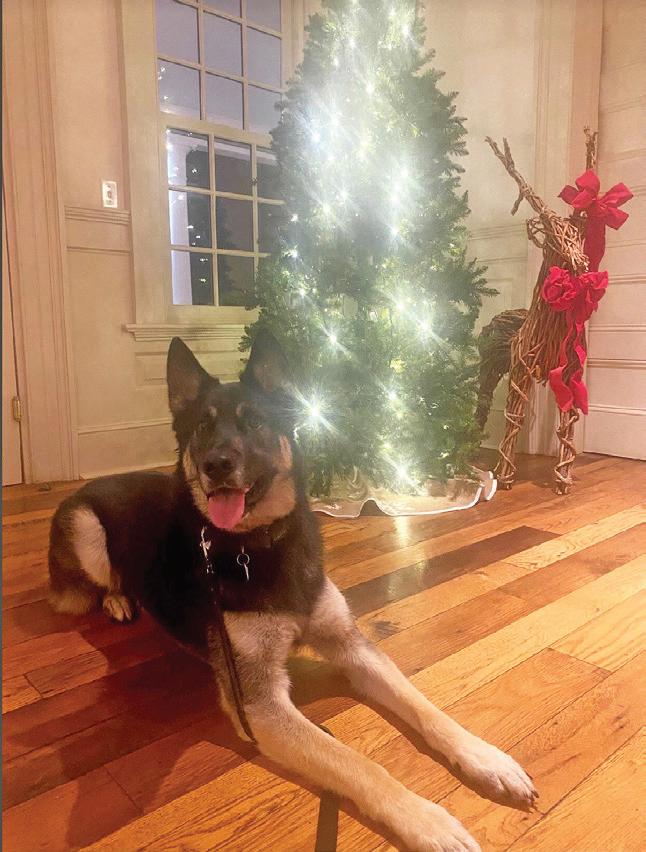
Photo by: Lena Curland

Nestled in in the far northwestern corner of the Litchfield Hills, within the charming town of Salisbury, Connecticut lies The White Hart. As a quaint inn with a simple sophistication, The White Hart is truly the perfect quintessential New England seasonal getaway. Elegantly designed around a comfortable, relaxed and welcoming atmosphere, The White Hart serves as the perfect backdrop for a romantic getaway, a pleasant family trip or as a quiet personal retreat.
Upon your visit you may enjoy a stroll with your pup around the town or at one of the many nearby parks. If you’re looking to further explore, bring your hiking boots and hit the Appalachian Trail that is adjacent to the inn. If you prefer to extend your horizons a little further than where a walk can take you, consider a drive around the area to admire the beautiful landscape that surround the inn. Before any excursion you plan for be sure that you stop by Provisions, which is located at the inn. Here you’ll find exactly what you need for your out-
ing such as locally sourced casual food and coffee as well as a modern take on the general store for any other necessities that you may have.
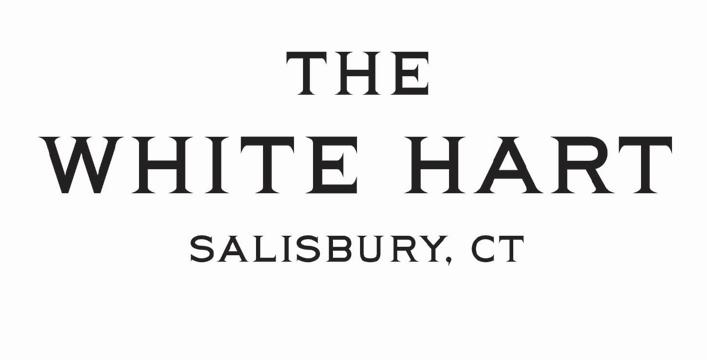
If it’s a blustery cold winter day and you wish to remain indoors, The White Hart provides a peaceful ambiance that invites you to sit back and relax by the fireplace in the main room, to spend time in the lounge playing a fun game or you can enjoy the little luxuries of a country inn right in the privacy of your room. No need to leave the premises for a bite to eat when you can enjoy a casual meal from Provisions or save your appetite for dinner as Chef Annie Wayte and Paul Pearson create dishes with a farm to table vibe.
Regardless of the reason that leads you to The White Hart, it’s a destination that you will want to visit year after year.
When making your reservation please be sure to mention your pup. The inn provides food and water bowls for dog guests throughout the duration of your stay.





